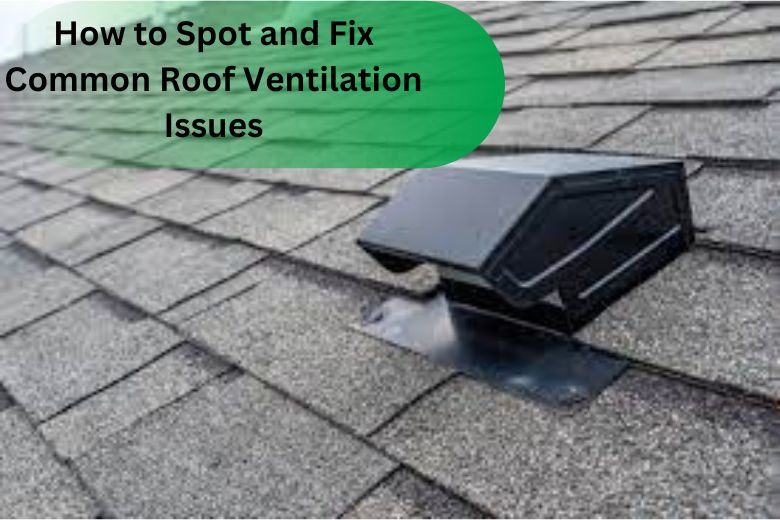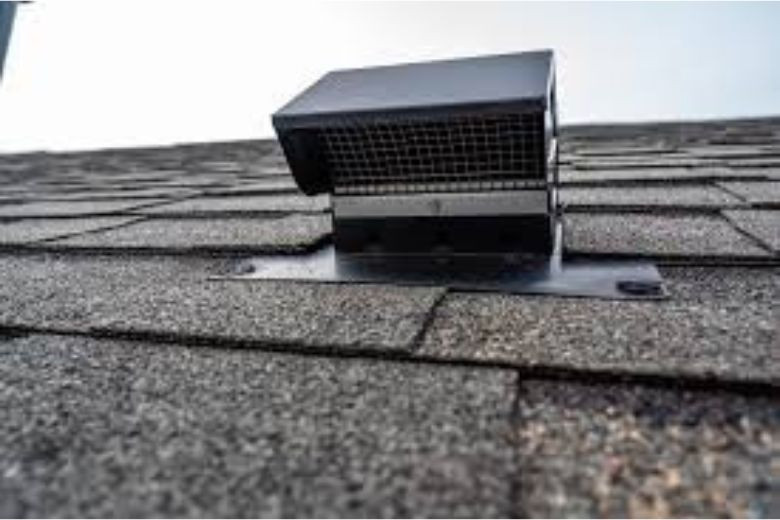How to Spot and Fix Common Roof Ventilation Issues
Posted on August 24, 2024 by Admin

Proper roof ventilation is just about being considered one of the factors to have a healthy and energy-efficient home. If it is not properly ventilated, then you are going to find several problems that range from energy loss to serious damage to your roofing, your health, and mold and mildew. Knowing how to identify common problems with your roof ventilation and how to fix them will save you headache, money, and stress.
Why Roof Ventilation Matters
Before providing tips on how to repair common roof ventilation issues, it would be appropriate to explain why roof ventilation is so important. Proper ventilation controls temperatures and water content in most parts of your attic and the roof structure. Temperature and moisture control—like overheating during summer and the accumulation of moisture during winter—avoids extensive damage to your home.
Identifying Roof Ventilation Problems
1. High Energy Bills
Probably one of the most prominent symptoms of a poorly ventilated roof has something to do with high energy bills. In the event of poor ventilation, this will work your HVAC system harder to provide you with comfortable temperatures, increasing your costs.
2. Winter Ice Dams:
If you find that ice dams form on the roof during winter, that is a pretty clear indication of ventilation issues. Ice dams are formed because warm air inside the attic melts the snow lying over the roof and refreezes at its edges, hence causing damage to the shingles and gutters.
3. Extreme Heat in Attic
A very hot attic is the sign of improper ventilation. Heat causes rooftop shingle damage and other materials, reducing their life expectancy.
4. Mold and Mildew
Because of improper ventilation, moisture shall collect to foster the growth of mold and mildew. Both these entities are dangerous to human health and hold serious implications for a home structure over time.
5. Visible Rust
If you have metal parts, nails, electrical boxes, or any other kind of metal rusting in your attic, that is due to too much moisture resulting from poor ventilation.

How to Fix Common Roof Ventilation Issues
1. Proper Installation of Ventilation Systems
The very first step in repairing common problems associated with roof ventilation is to install a proper type of ventilation. This should include intake ventilation systems. The two work by allowing entry of cool air while at the same time letting out hot air.
2. Unblock Existing Vents
Most of the time, the existing vents get blocked by debris or insulation. In that case, check the vents frequently for any blockages and ensure that they are working right.
3. Improve Attic Insulation:
Proper insulation of the attic not only regulates temperature but also prevents most of the ice dams. Check whether the attic is well insulated and if installed without blocking the vents properly.
4. Attic Fans
Should this passive ventilation not be considered sufficient, then consider solar-powered or electric attic fans that would provide additional circulation of air-flow through the attic.
5. Look for and Seal Leaks
Air leaks misapply your attic's ventilation by letting the conditioned air outside your house go out and the outside air come in. Inspect leaks of air in the attic at openings around vents, chimneys, etc., and seal them right.
6. Regular Maintenance and Inspection
Most common problems related to roof ventilation can either be prevented or corrected if a program of regular maintenance is in place. Therefore, an annual inspection by a professional should be scheduled to ensure the ventilation system is working correctly and to correct any developing problems.
Must Read : The Pros and Cons of Roof Replacement vs. Roof Overlay
Conclusion
The ability to identify and correct common problems with roof ventilation is very vital to the health and efficiency of your home. Keep an eye for telltale signs of trouble ranging from high energy bills to ice dams, more than recommended quantities of attic heat, mold, and rust, so that you may be able to identify ventilation problems before they grow to be major issues. Do this through proper ventilation systems, cleaning existing vents, improving insulation, installation of attic fans, and sealing off leaks. Proper roof ventilation alone doesn't stop at comfort; it is about the well-being of your investment and your well-being, period.
Faqs
-
1. What are the indications of poor roof ventilation?
The indications for poor roof ventilation are high energy bills, formation of ice dams during winter, excessive heat in the attic, growth of mold and mildew, and visible rust on metal components in the attic.
-
2. How to fix common roof ventilation issues?
They can repair common roof ventilation problems by installing a proper ventilation system with intake and exhaust vents, cleaning existing vents, adding more attic insulation, installing attic fans if necessary, and sealing up attic leaks.
-
3. Why is proper roof ventilation important?
Proper roof ventilation controls the temperature and amount of moisture within the attic and the roof structure to prevent its damage, like deterioration of the roof shingles, and growth of mold and mildew; it also prevents the formation of ice dams during the winter season.
-
4. What kinds of vents are necessary for good roof ventilation?
Good roof ventilation will include intake vents like soffit vents and exhaust vents, such as ridge vents or attic fans, so that cool air can enter and hot air can leave in a balanced fashion.
-
5. When should a professional be called in to repair the roof ventilation?
If you know the continuous signs of bad ventilation into your roof, such as high energy bills, growth of mold, or even structural damage, then call in a professional to repair ventilation. Otherwise, if you don't know how to install or repair a ventilation system, seek help from a professional.
Recent Post
- Top Plumbing Service Providers in Arizona, USA
- Top 10 Electrician Service Providers in Alabama, USA
- Top 20 Roof Repair Service Providers in Alabama, USA
- The Role of Roof Insulation in Energy Efficiency: Tips and Tricks
- Understanding Roof Damage from Wildlife and How to Prevent It
- How to Choose the Best Roofing Contractor for Emergency Repairs
- Roofing Maintenance for Historic Homes: Preserving Architectural Integrity
- The Importance of Proper Attic Ventilation for Roof Health
- How to Identify and Prevent Roof Mold and Mildew
- The Best Practices for Removing Snow from Your Roof